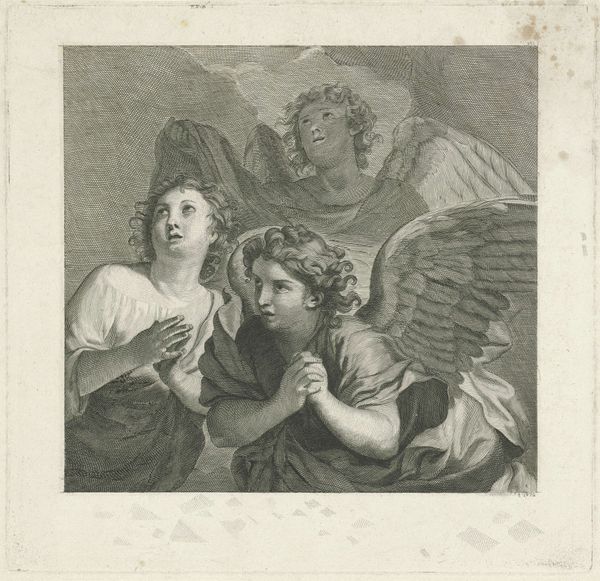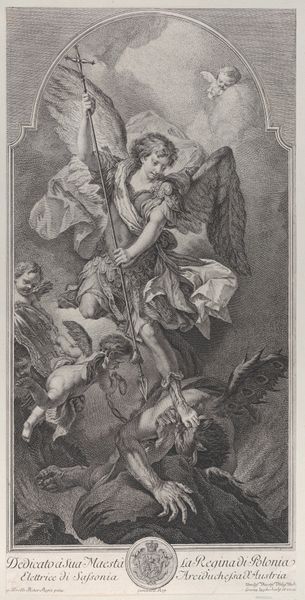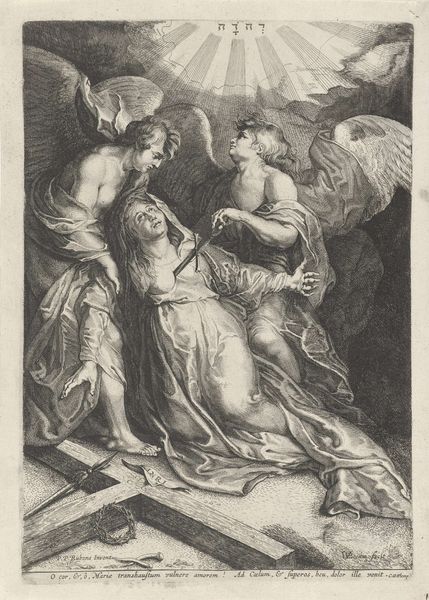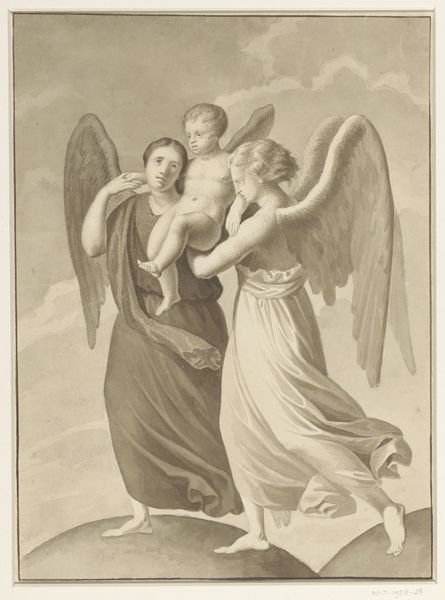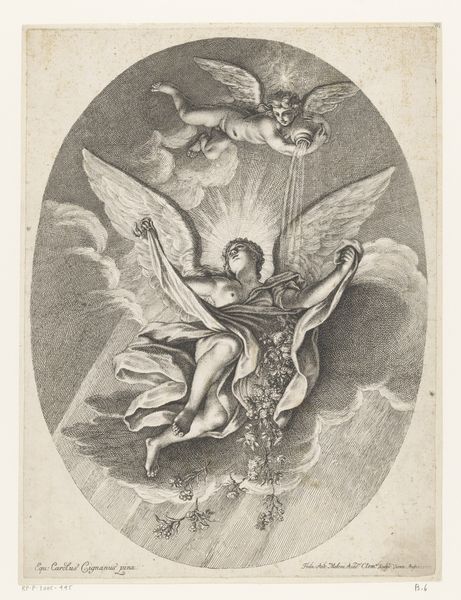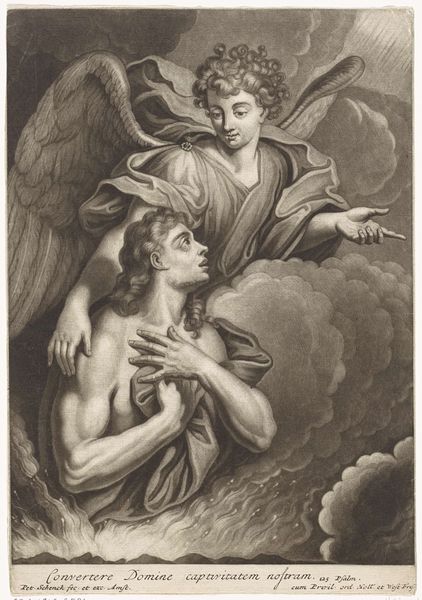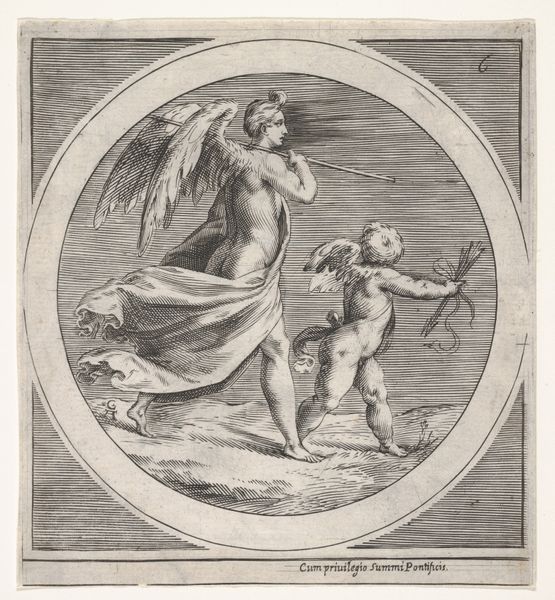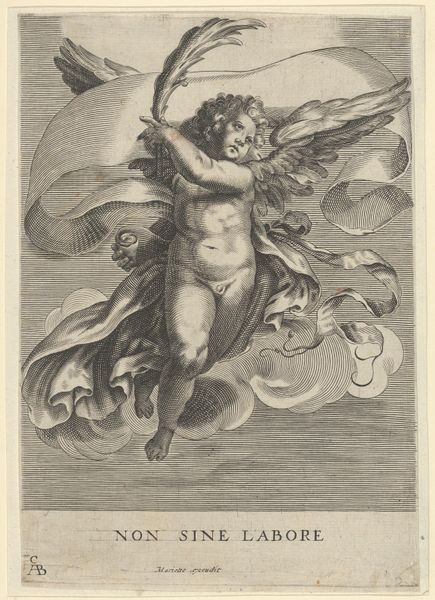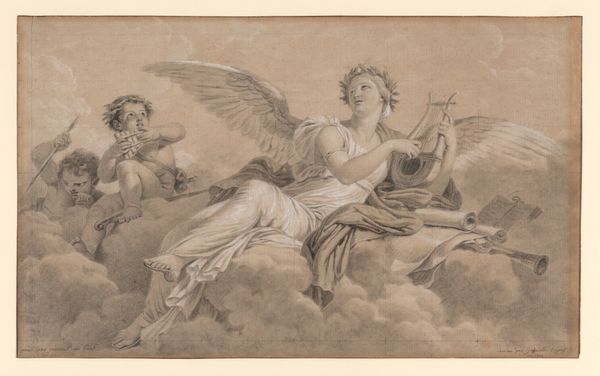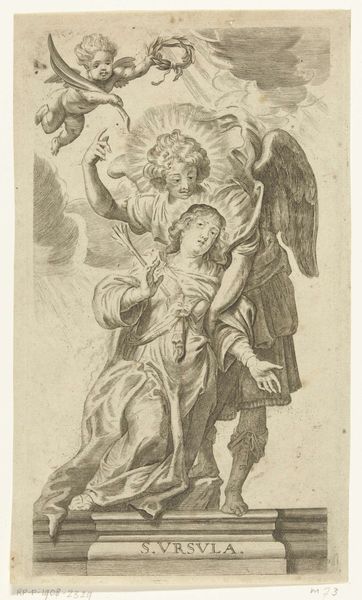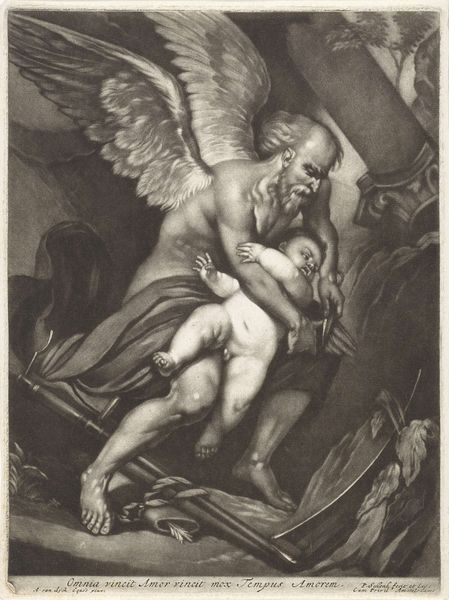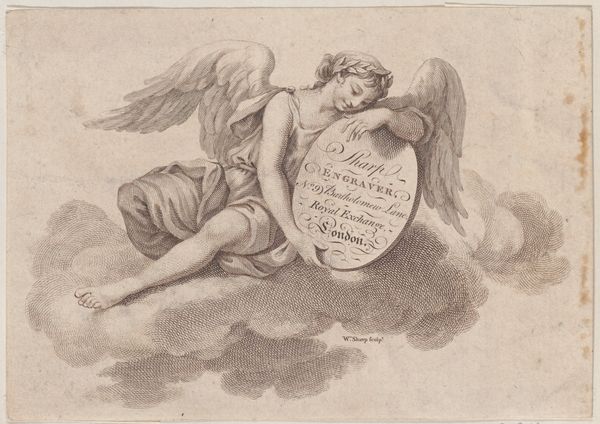
Dimensions: height 274 mm, width 287 mm
Copyright: Rijks Museum: Open Domain
Curator: Before us, we have "Two Angels," an engraving dating back to 1772, currently residing here at the Rijksmuseum and crafted by the hand of Pieter Willem van Megen. The detail is striking for a work of this age. Editor: The expressions are quite captivating, aren't they? A sort of frozen drama unfolds before us in shades of grey. And are they terrified, or astonished? It's hard to quite grasp their... situation. Curator: I think both. The artist has managed to convey such dynamic emotion within what, at first glance, seems like a rigid medium. Engraving, especially during the Baroque era, relies on precise lines, demanding incredible control over the material, most likely copper or steel plates in this case. Editor: Indeed. And it's that relationship to the *material*—the labor involved in the repeated cutting and etching—that fascinates me most. It feels worlds apart from the effortless, floating world of angels, a stark contrast, when you consider the industrial origins and precision involved in creating something "divine". What were these engravings produced *for*? Curator: Often religious instruction or edification. Remember, these images would have been relatively accessible, mass-produced, in a sense. Their purpose being widespread dissemination to the public. This engraving presents such emotion, not as simple heavenly beings, but infused with earthly fears and wonder. Editor: You can practically *feel* the individual strikes of the tool across the plate. It makes you contemplate, how did each of those cuts translate an otherworldly feeling? We often strip the "making of" the object from any discourse about it! Thinking about what it meant to van Megen gives one pause. Curator: I think so. Pieter was offering not just divinity but human vulnerability—all through the precision of his tools and the deep intaglio of his plates. Editor: Looking closely, these angels are fraught and caught within some heavy historical net of theology, of manufacture, and consumption. It truly makes you contemplate what it meant to produce images like this during a tumultuous period in Europe. Curator: It leaves me thinking: beyond the visual appeal, there is so much human labor, artistic intention and historic weight pressed upon its surface, it invites reflection on artistry and production. Editor: Indeed, even something ethereal emerges from earthbound labor and imagination. It almost invites us to imagine where those hands and lines go after our visit...
Comments
No comments
Be the first to comment and join the conversation on the ultimate creative platform.
